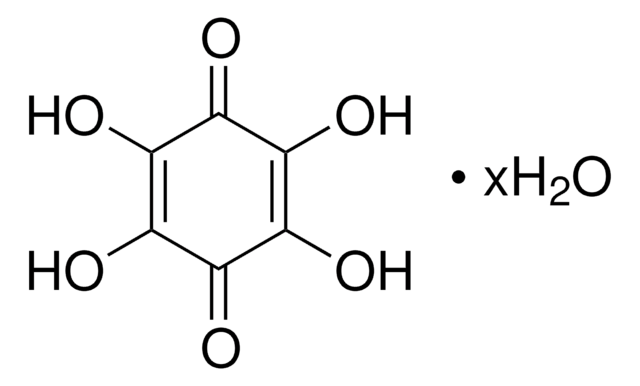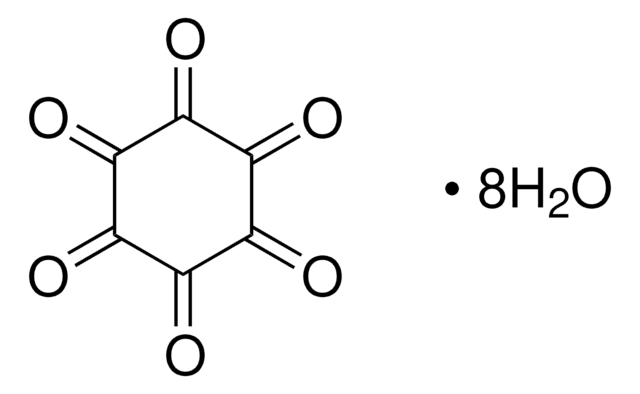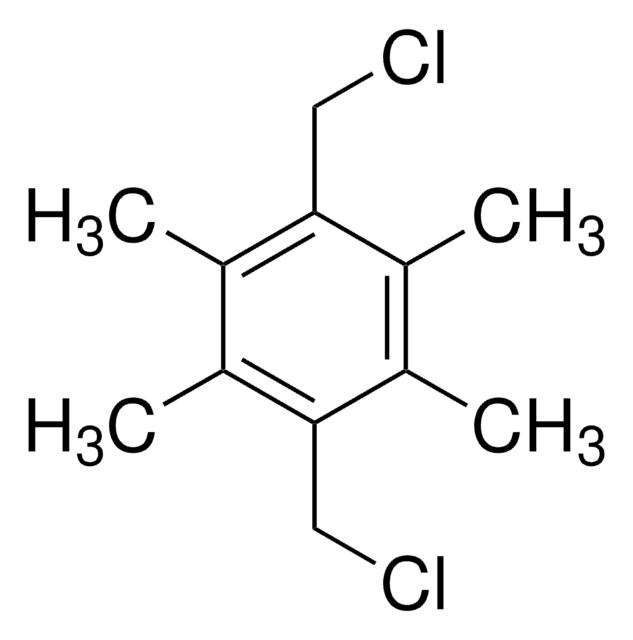C8136
Chloranilic acid
≥98%
Sinónimos:
2,5-Dichloro-3,6-dihydroxy-2,5-cyclohexadiene-1,4-dione, 2,5-Dichloro-3,6-dihydroxy-p-benzoquinone, NSC 6108, NSC 97383
Seleccione un Tamaño
About This Item
Productos recomendados
Ensayo
≥98%
Formulario
powder
mp
≥300 °C (lit.)
cadena SMILES
OC1=C(Cl)C(=O)C(O)=C(Cl)C1=O
InChI
1S/C6H2Cl2O4/c7-1-3(9)5(11)2(8)6(12)4(1)10/h9,12H
Clave InChI
IPPWILKGXFOXHO-UHFFFAOYSA-N
¿Está buscando productos similares? Visita Guía de comparación de productos
Categorías relacionadas
Aplicación
- Acting as a proton donor in reactions studying dimensionality control
- Synthesis of dimethylbipyridyl complexes
- Synthesis of (nonylbenzimidazolylmethyl)benzene for preparation of neutral altitudinal rotor-shaped dirhenium metallacycles
- Charge-transfer reactions with metoprolol tartrate
- Salt formation with organic bases
- Synthesis of osmium metalla-rectangles with anticancer activity
Palabra de señalización
Warning
Frases de peligro
Consejos de prudencia
Clasificaciones de peligro
Eye Irrit. 2 - Skin Irrit. 2 - STOT SE 3
Órganos de actuación
Respiratory system
Código de clase de almacenamiento
11 - Combustible Solids
Clase de riesgo para el agua (WGK)
WGK 3
Punto de inflamabilidad (°F)
Not applicable
Punto de inflamabilidad (°C)
Not applicable
Equipo de protección personal
dust mask type N95 (US), Eyeshields, Gloves
Elija entre una de las versiones más recientes:
¿Ya tiene este producto?
Encuentre la documentación para los productos que ha comprado recientemente en la Biblioteca de documentos.
Los clientes también vieron
Active Filters
Nuestro equipo de científicos tiene experiencia en todas las áreas de investigación: Ciencias de la vida, Ciencia de los materiales, Síntesis química, Cromatografía, Analítica y muchas otras.
Póngase en contacto con el Servicio técnico












